Unit 6: Anticipating Patterns
Terms and Concepts
- Probability: the chance of the outcome of an event
- Sample space: a set of all possible outcomes
- Tree diagram: representation is useful in determining the sample space for an experiment, especially if there are relatively few possible outcomes.
Basic Probability Rules and Terms
Rule 1: For any event A, the probability of A is always greater than or equal to 0 and less than or equal to 1
Rule 2: The sum of the probabilities for all possible outcomes in a sample space is always 1
Impossible event: If an event can never occur, its probability is 0
Sure event: Of an event must occur every time, its probability is 1
“Odds in favor of an event”: ratio of the probability of the occurrence of an event to the probability of the nonoccurrence of that event.
- Odds in favor of an event = P(Event A occurs) / P(Event A does not occur) or P(Event A occurs) : P(Event A does not occur)
Complement: the set of all possible outcomes in a sample space that do not lead to the event
Disjoint or mutually exclusive events: events that have no outcome in common. In other words, they cannot occur together.
Union: events A and B is the set of all possible outcomes that lead to at least one of the two events A and B
Intersection: events A and B is the set of all possible outcomes that lead to both events A and B
Conditional Events: A given B is a set of outcomes for event A that occurs if B has occurred
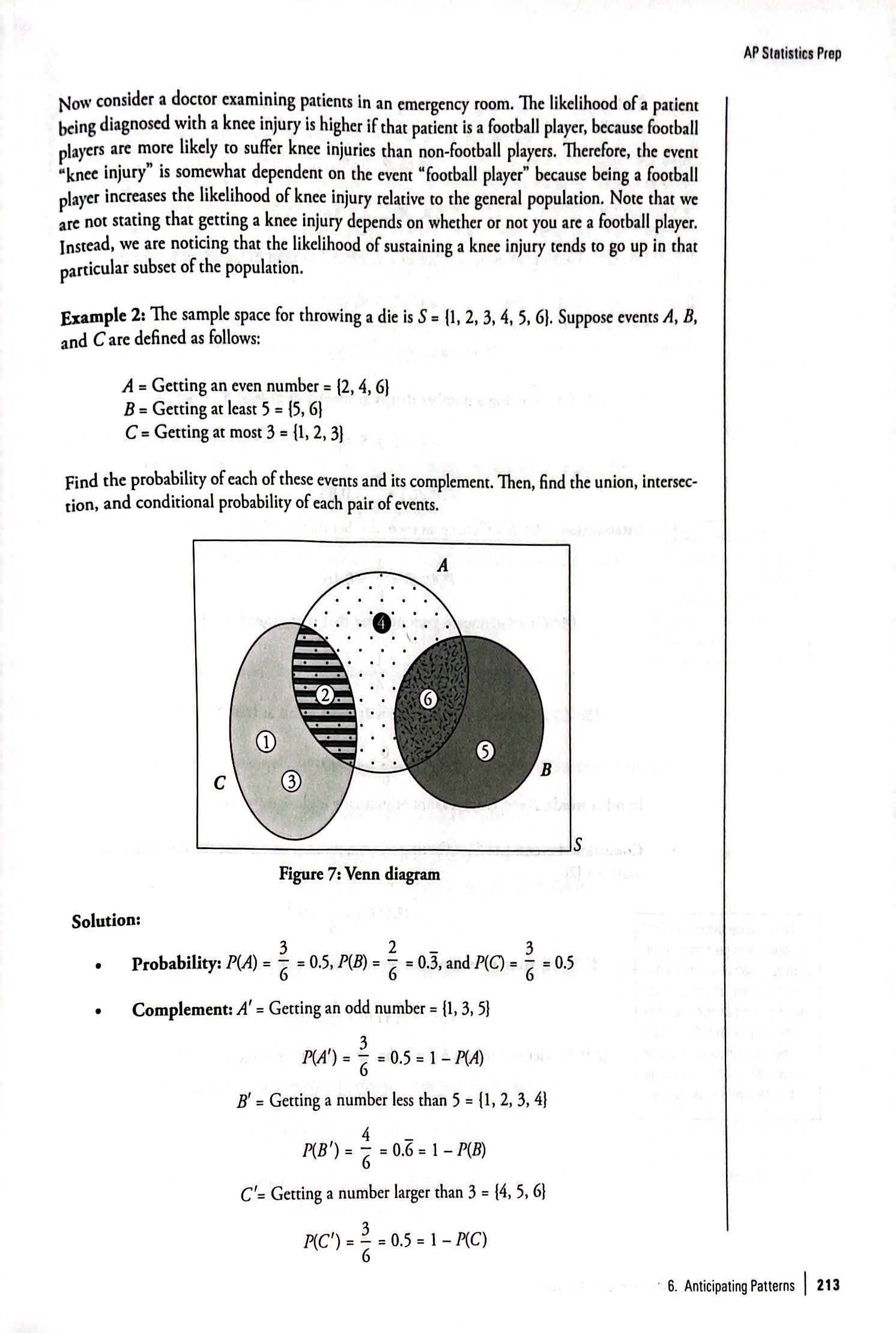
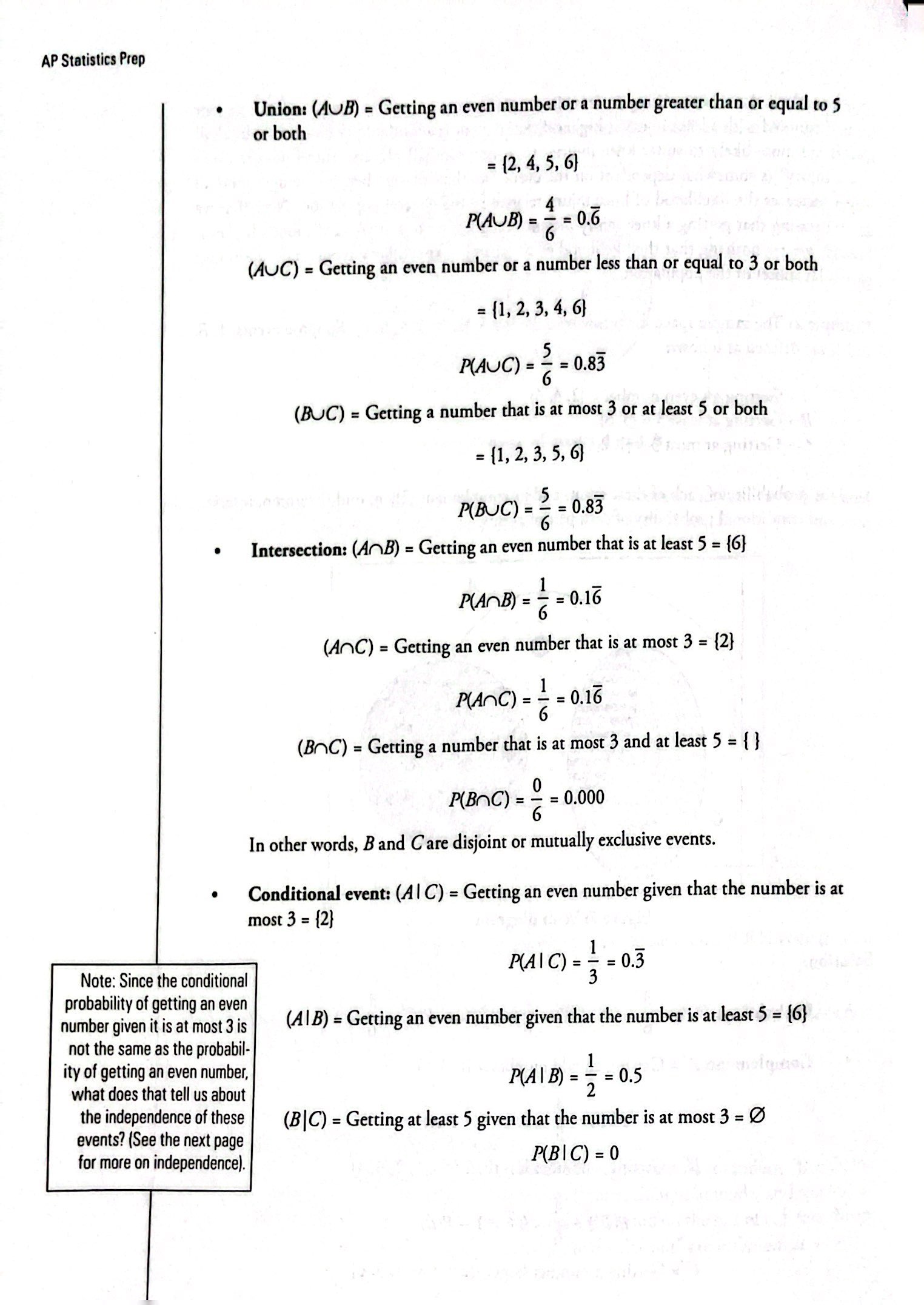
Random Variables and Their Probability Distribution
- Variable: quantity whose value varies from subject to subject
- Probability experiment: an experiment whose possible outcomes may be known but whose exact outcome is a random event and cannot be predicted with certainty in advance
- Random variables: The outcome of a probability experiment takes a numerical value
- Discrete random variable: quantitative variable that takes a countable number of values
- Continuous random variable: a quantitative variable that can take all the possible values in a given range
Discrete Random Variable
Expected value: Computed by multiplying each value of the random variable by its probability and then adding over the sample space
Variance: sum of the product of squared deviation of the values of the variable from the mean and the corresponding probabilities
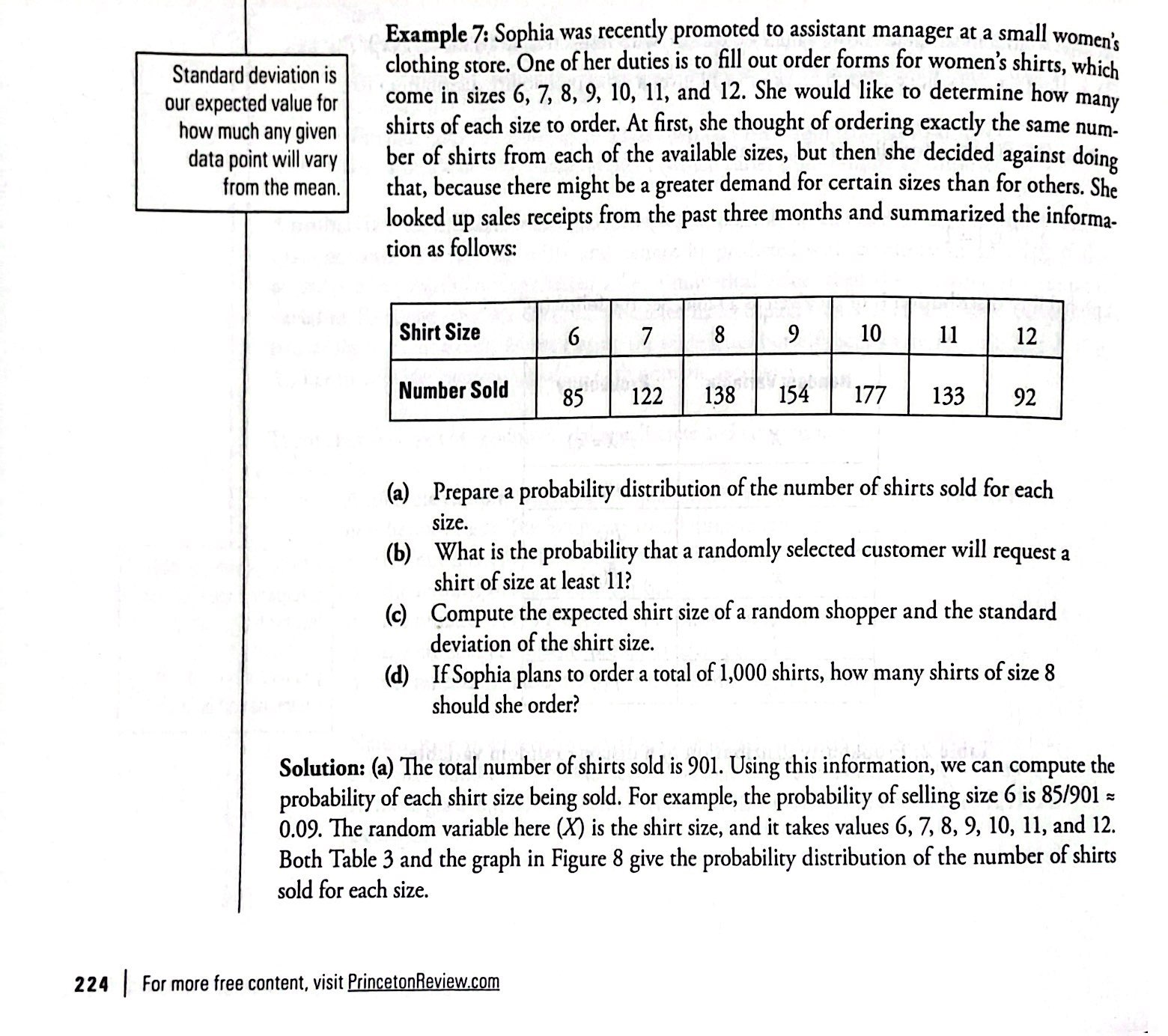
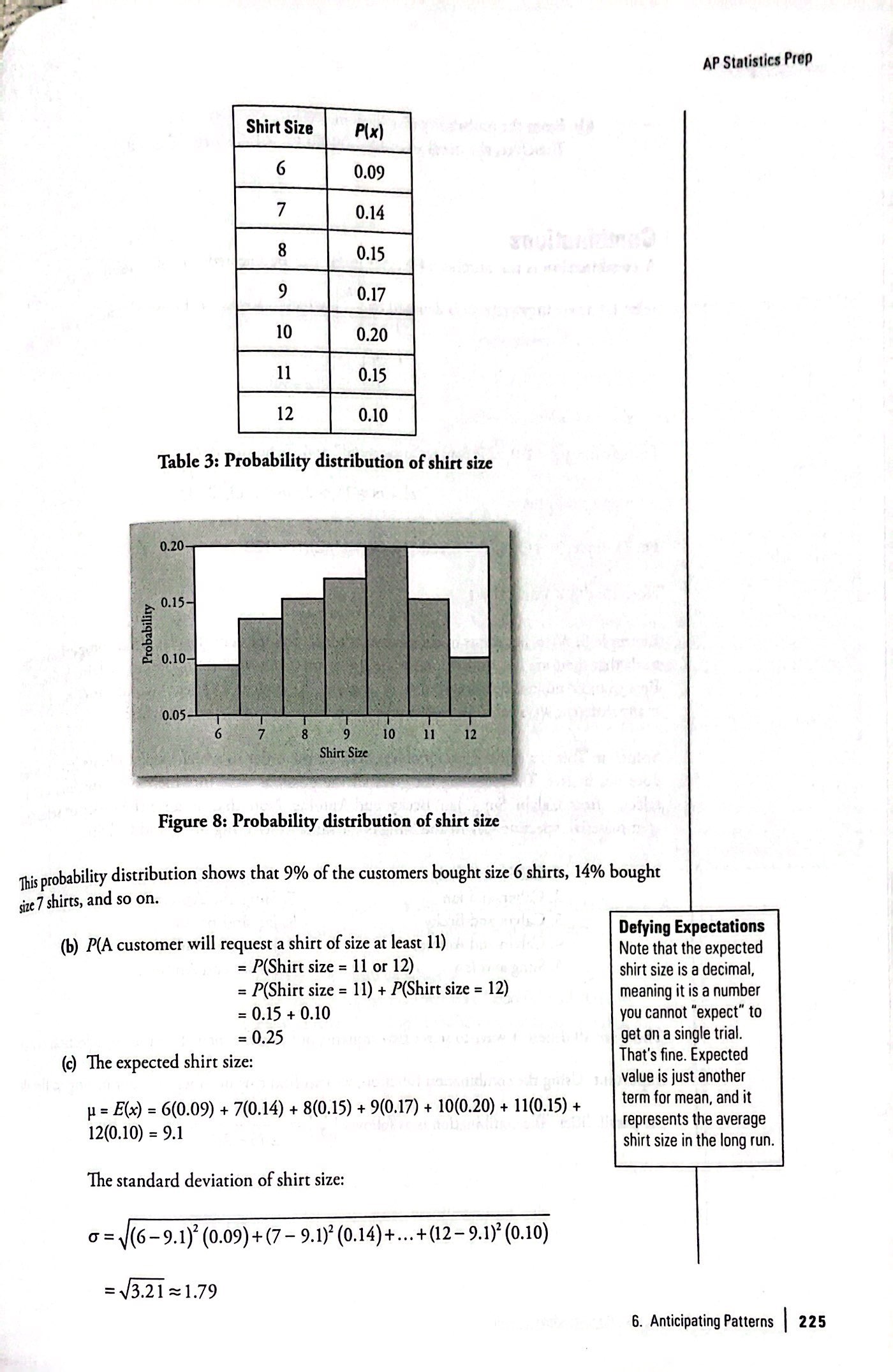

Combinations
- Combination: the number of ways r items can be selected out of n items if the order of selection is not important.
Binomial Distribution
3 Characteristics of a binomial experiment
- There are a fixed number of trials
- There are only 2 possible outcomes
- The n trials are independent and are repeated using identical conditions
Binomial probability distribution:
- Mean:
μ = np - Variance:
σ2 = npq - Standard deviation:
σ = √npq
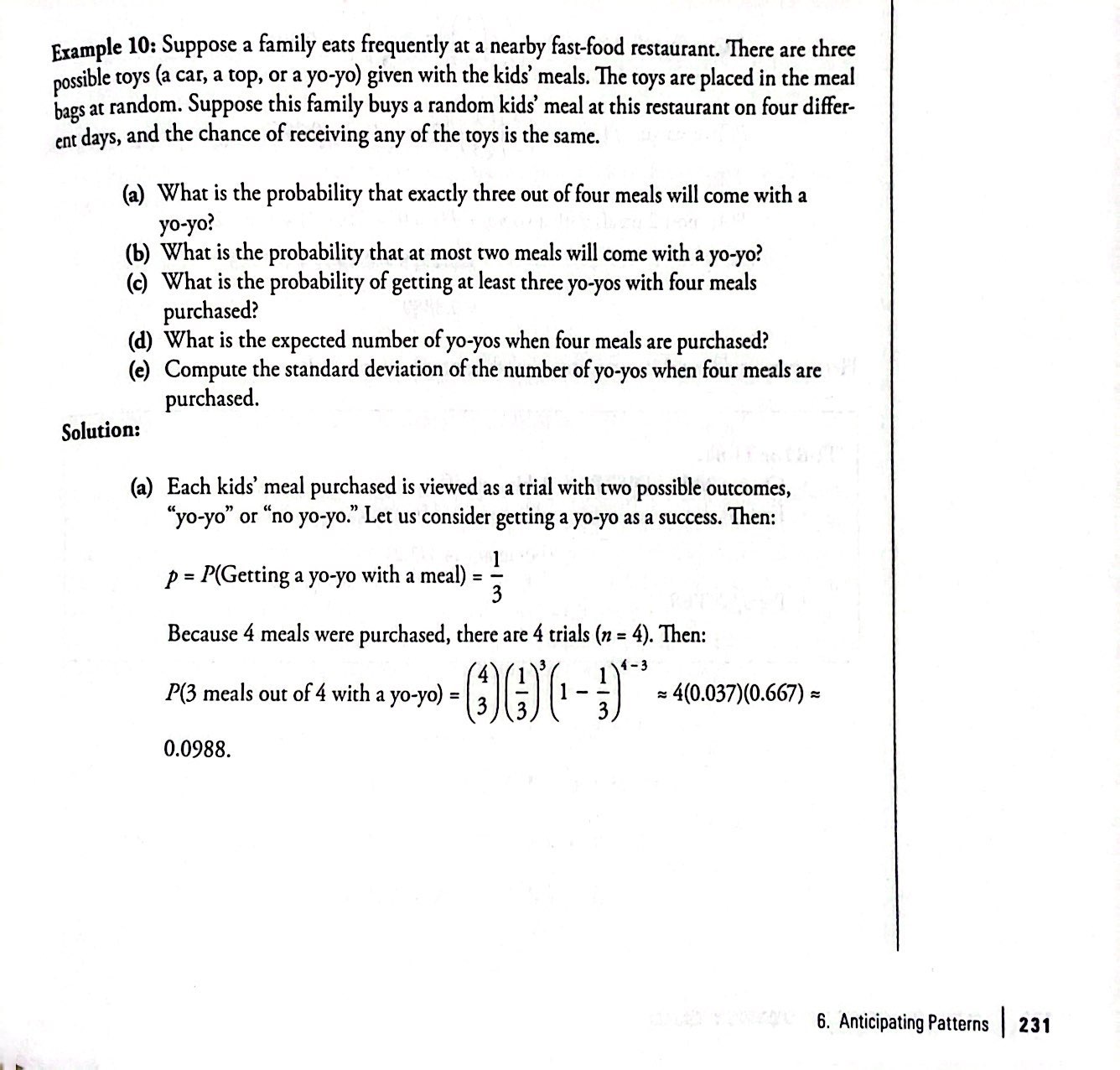
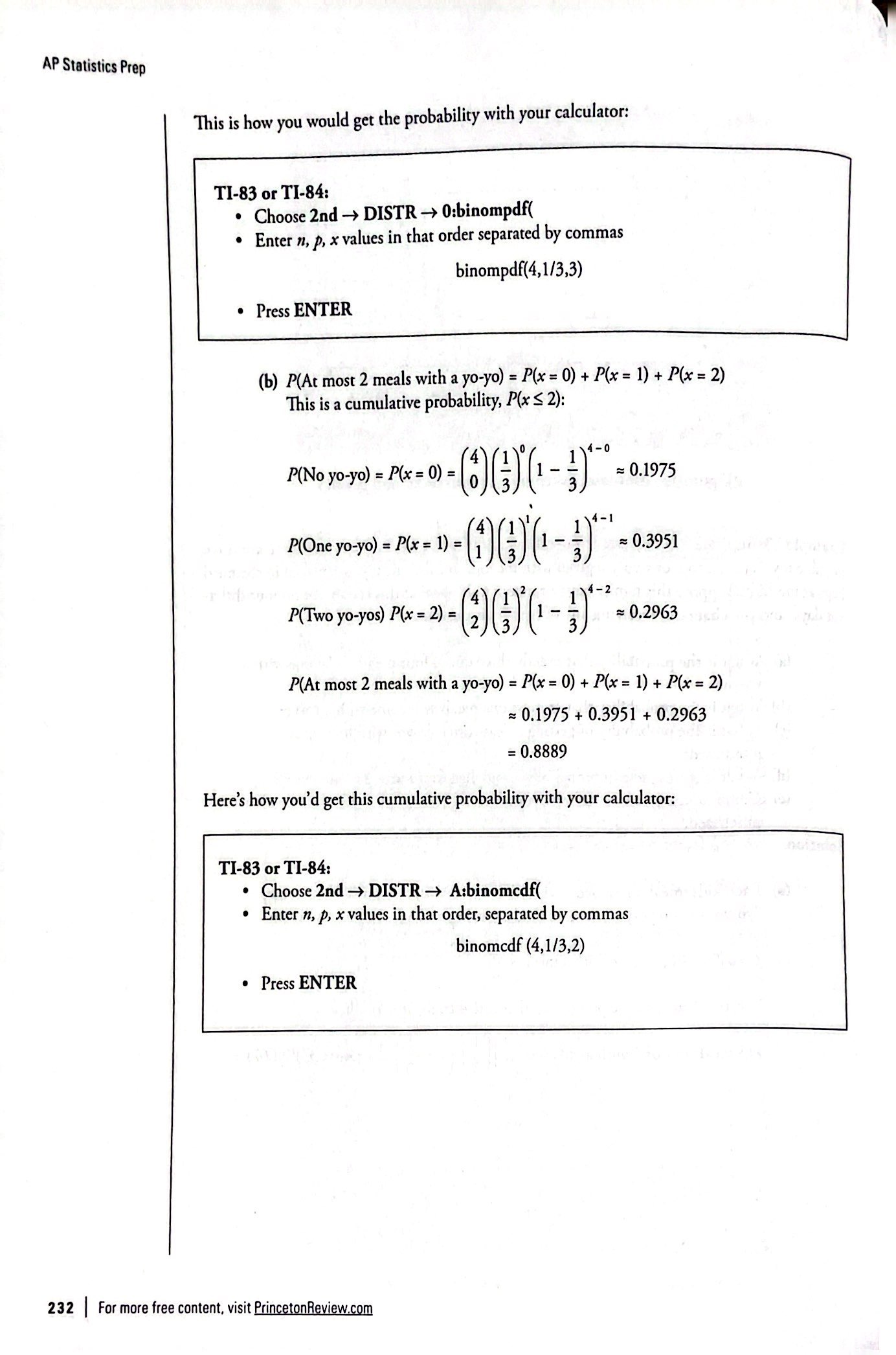
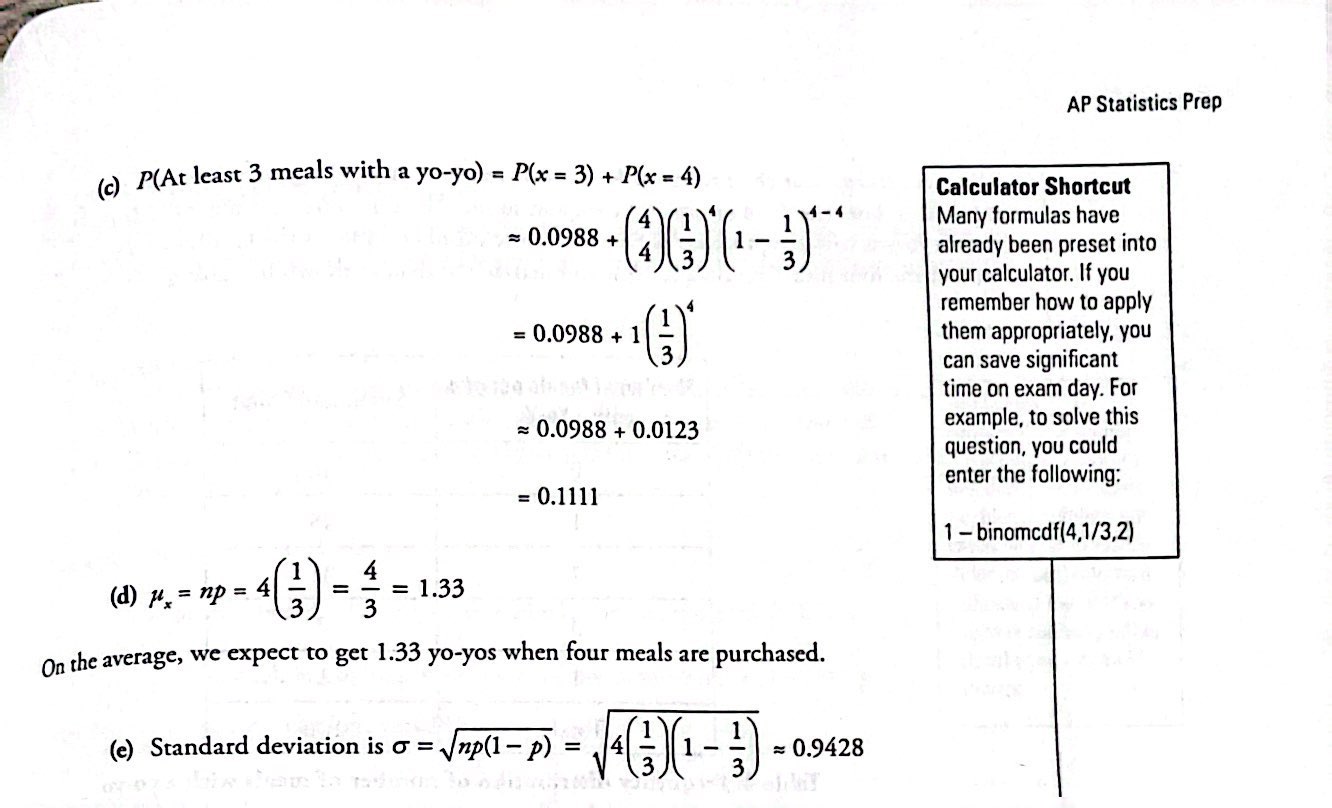
- Mean:
Geometric Distribution
3 Characteristics of a geometric experiment
- There are one or more Bernoulli trials with all failures except the last one, which is a success. In other words, you keep repeating what you are doing until the first success.
- In theory, the number of trials could go on forever. There must be at least one trial.
- The probability, p, of a success and the probability, q, of a failure is the same for each trial. p + q = 1 and q = 1 − p.
X = the number of independent trials until the first success
Mean:
μ = 1/pStandard Deviation:
σ = √1/𝑝(1/𝑝−1)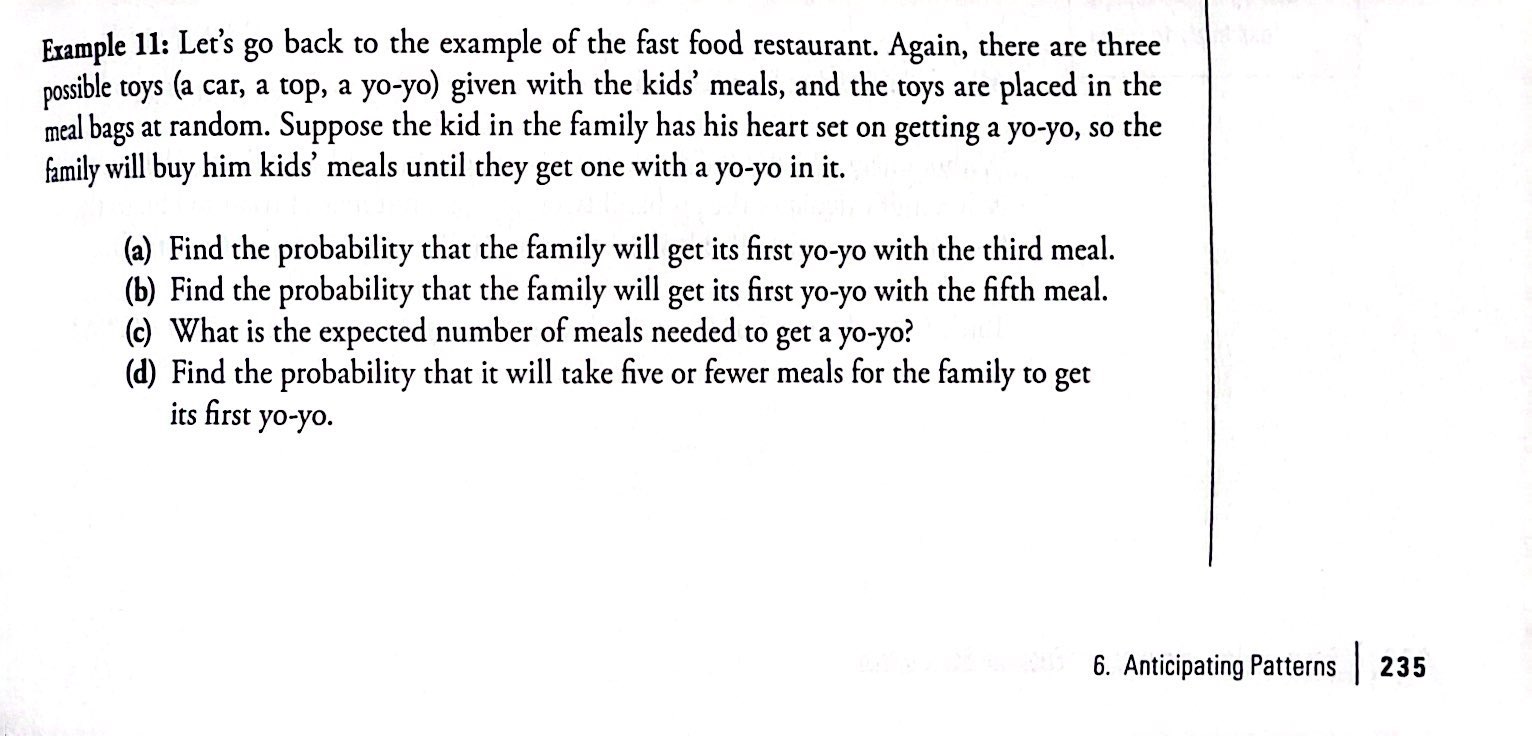
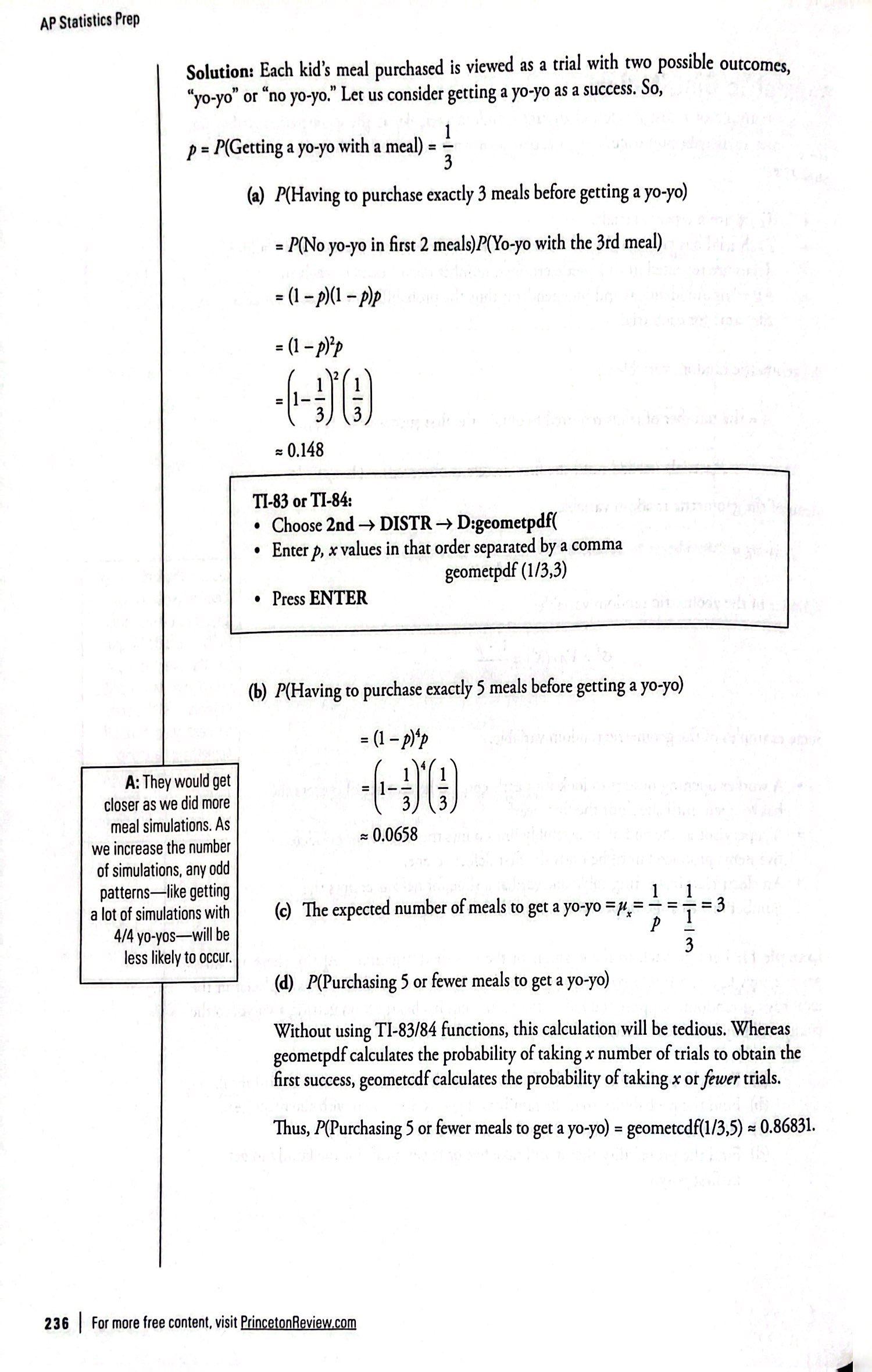
The Probability Distribution of Continuous Random Variables
- The continuous probability distribution (cdf): graph or a formula giving all possible values taken by a random variable and the corresponding probabilities
Let X be a continuous random variable taking values in the range (a, b)
The area under the density curve is equal to the probability
P(L < X < U) = the area under the curve between L and U, where a ≤ L ≤ U ≤ b
The total probability under the curve = 1
The probability that X takes a specific value is equal to 0, i.e., P(X = x0) = 0
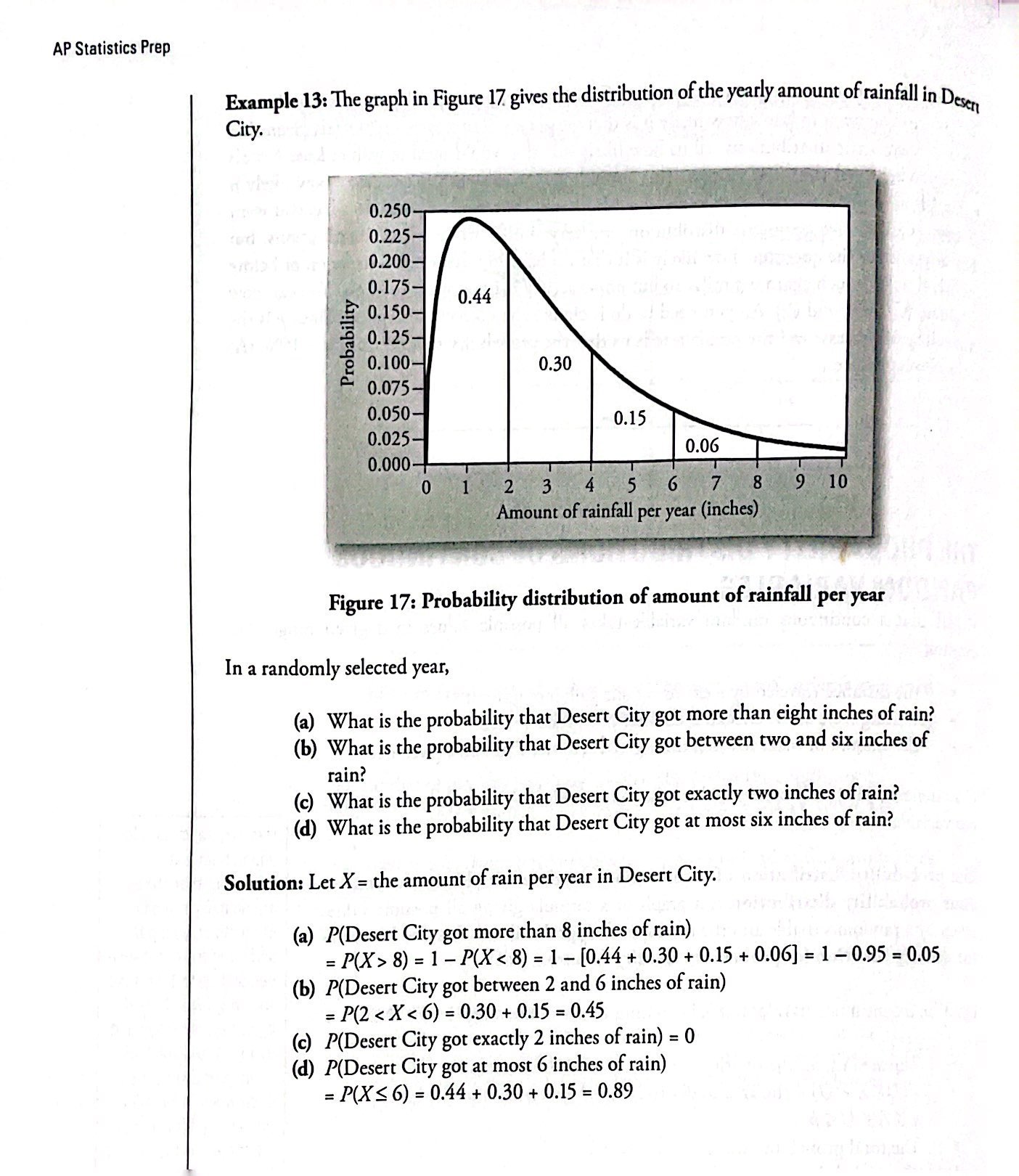
Sampling Distribution
Parameter: a numerical measurement describing some characteristic of a population.
Statistic: a numerical measurement describing some characteristic of a sample.
Sampling distribution: the probability distribution of all possible values of a statistic, different samples of the same size from the same population will result in different statistical values
Standard error: standard deviation of the distribution of the statistics.
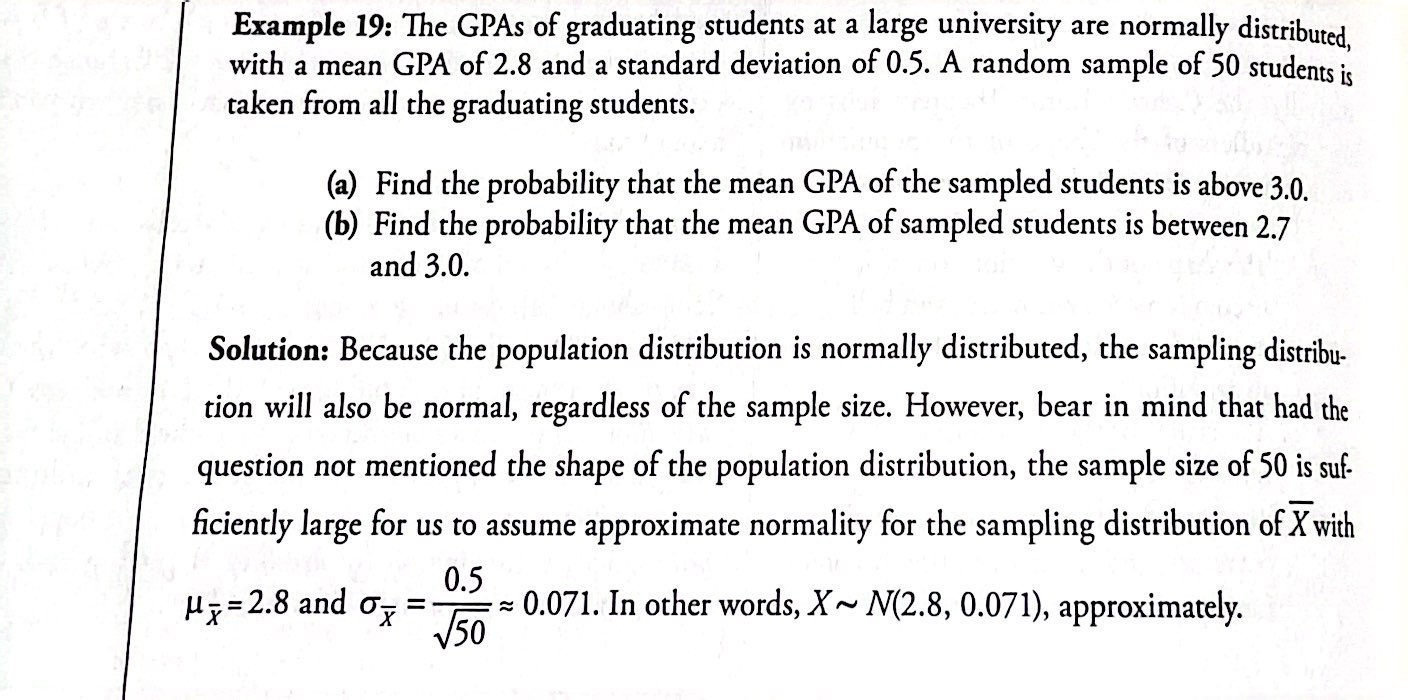
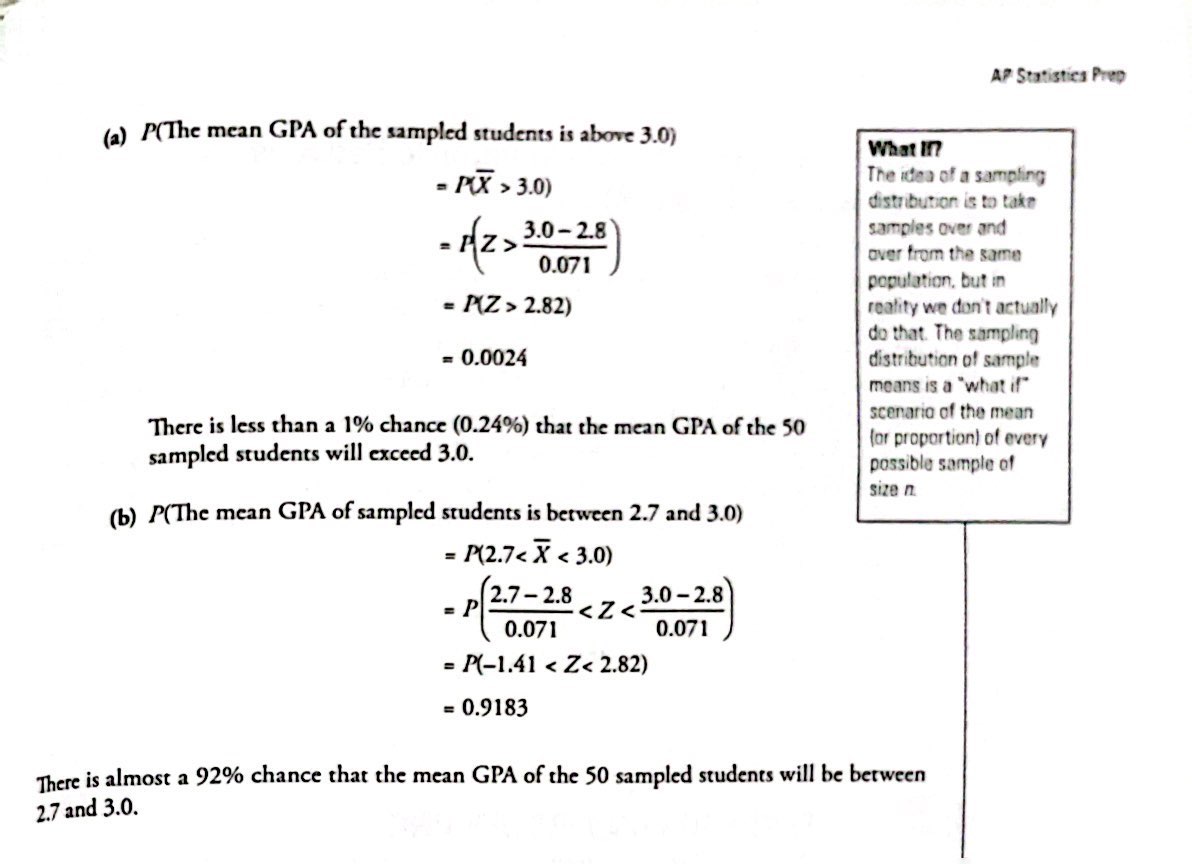
Central Limit Theorem
- Central limit theorem: If the sample size is large enough then we can assume it has an approximately normal distribution.
- The sample size has to be greater than 30 to assume an approximately normal distribution
- The shape of the distribution of “X bar” becomes more symmetrical and bell-shaped
- The center of the distribution of “X bar” remains at μ
- The spread of the distribution “X bar” decreases, and the distribution becomes more peaked
Calculator Steps
Probabilities for means on the calculator
- 2nd DISTR
- 2:normalcdf
- normalcdf (lower value of the area, upper value of the area, mean, standard deviation / √sample size)
- where
- mean is the mean of the original distribution
- standard deviation is the standard deviation of the original distribution
- sample size = n
Percentiles for means on the calculator
- 2nd DISTR
- 3:InvNorm
- k = invNorm (area to the left of 𝑘, mean, standard deviation / √sample size)
- Where→
- k = the kth percentile
- mean is the mean of the original distribution
- standard deviation is the standard deviation of the original distribution
- sample size = n
Probabilities for sums on the calculator
- 2nd DISTR
- 2: normalcdf (lower value of the area, upper value of the area, (n)(mean), (√n)(standard deviation))
- where:
- mean is the mean of the original distribution
- standard deviation is the standard deviation of the original distribution
- sample size = n
Percentiles for sums on the calculator
- 2nd DIStR
- 3:invNorm
- k = invNorm (area to the left of k, (n)(mean), (√n)(standard deviation)
- where:
- k is the kth percentile
- mean is the mean of the original distribution
- standard deviation is the standard deviation of the original distribution
- sample size = n